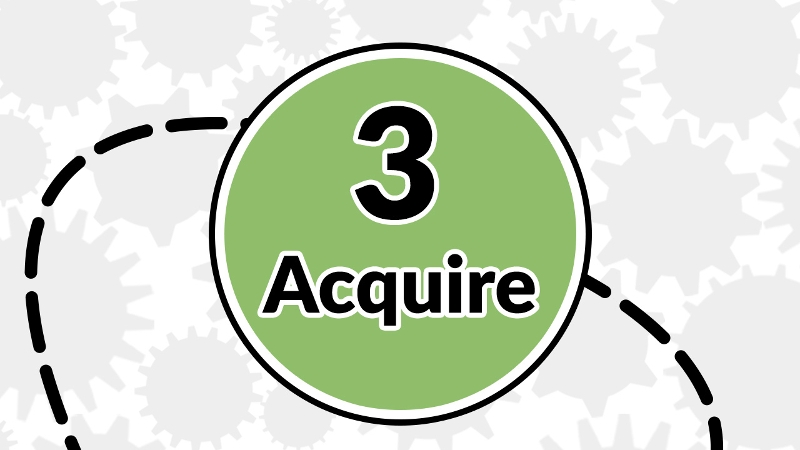Acquiring Accessible Formats

Learn about providing braille for state assessments.
Acquiring the accessible formats a learner needs is part of a multi-step decision-making process. By prioritizing accessibility, access barriers for learners with disabilities will be minimized when materials are acquired. In cases where inaccessible materials have been selected, alternative forms - accessible formats - of those materials will have to be acquired for learners who need them. Examples of accessible formats include audio, braille, large print, tactile graphics, and digital text conforming with accessibility standards.
Accessible formats of materials can be acquired from:
Accessible Formats from Accessible Media Producers
Accessible media producers (AMPs) are services that convert materials, including textbooks and related curriculum materials, to one or more student-ready accessible formats.
AMPs are permitted to provide accessible formats to qualified individuals without publisher permission under a U.S. copyright exemption commonly known as the Chafee Amendment. Following the allowances of the Chafee Amendment, each of the following AMPs has its own procedures for permitting access to its files:

Bookshare
Bookshare is the largest accessible ebook library in the world. Funded by the U.S. Department of Education, Bookshare membership is free for qualifying U.S. students.

Learning Ally
Learning Ally is a non-profit organization with an extensive library of human-read audiobooks. Browse or search audiobooks by grade, lexile level, subject, category, or curriculum.

Louis Plus
The American Printing House for the Blind (APH) maintains the Louis Database of Accessible Materials. Materials include books in braille, large print, audio, and electronic file format.
AMPs in Your State
- The National Library Service (NLS) compiles a state directory of producers of accessible formats, specifically audio, braille, and large print. The directory includes information supplied by producers and therefore does not represent every state. See if the NLS directory of producers includes your state.
- In addition to the NLS directory, your state has an AEM state contact who can assist you with resources available to learners who need accessible formats.
Accessible Formats from Publishers
Communicating accessibility requirements and expectations to publishers is the best way to minimize access barriers for learners with disabilities. When accessible ebooks and related digital materials are purchased directly from publishers, the need to acquire accessible formats for individual students can be significantly reduced. People in positions of selecting and purchasing instructional materials from publishers should follow the AEM Center’s best practices for vetting accessible digital materials and technologies.
When a copyrighted textbook or other core curriculum material - whether in print or digital - is not accessible for a learner who qualifies for accessible formats under the Chafee Amendment, an accessible format can be requested from the publisher. First see if the material is already available from an AMP.
Separate processes apply for acquiring accessible formats from K-12 versus postsecondary publishers.
K–12 Publishers
AEM Center Note
The process for expediting accessible formats from K-12 publishers was created under IDEA 2004. As a direct result, accessible formats acquired through this process are available to students who are dually qualified under IDEA and copyright law.
Before making a direct request of a publisher, schools should determine if the purchase order for the material includes what is known as a NIMAS clause. Every state currently coordinates with the NIMAC, an online repository of NIMAS files established under IDEA 2004. NIMAS files are used by AMPs to expedite the production of accessible formats. Using language in purchase orders, states and districts direct publishers to deposit the NIMAS files of their textbooks and related core materials in the NIMAC. If a purchase order for a material has a NIMAC clause, its NIMAS file should be available for download from the NIMAC.
AEM Center Note
- NIMAS stands for National Instructional Materials Accessibility Standard.
- NIMAC stands for National Instructional Materials Access Center.
Visit NIMAS & NIMAC for more information.
Anyone can search for NIMAS files in the NIMAC. Only individuals and organizations known as Authorized Users (AUs), however, are permitted to download NIMAS files. For example, Bookshare is an AU for many states. Contact your state’s NIMAC Coordinator to learn about your state’s AUs and the process for acquiring accessible formats from the NIMAC.
Accessible Formats from Local Conversion
Some instructional materials are not available in accessible formats from AMPs or publishers. Accessible versions of these materials need to be created by local staff or volunteers. Audio recording and scanning materials with optical character recognition (OCR) software are common methods of converting materials using local means.
AEM Center Note
The same copyright restrictions that apply when acquiring accessible formats from AMPs apply to local creation.
Accessible versions of free, open, or teacher-developed materials can be provided to any and all learners. Giving all learners choice in format means they can independently make their own selection, whether based on need or preference. Providing options for accessing materials is foundational to Universal Design for Learning (UDL). Developed by CAST, UDL is recommended in federal education policies that span K-12, higher education, and career training.
Teachers can build accessibility into the materials they develop for use by all learners. Creation tools for websites, documents, slide decks, and video all include the features teachers need to make content accessible from the beginning. This reduces the burden of locally creating accessible formats for students who require them, while at the same time promoting UDL.
Learn about designing for accessibility.
